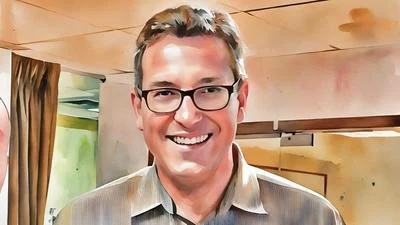The Congressional Record is a unique source of public documentation. It started in 1873, documenting nearly all the major and minor policies being discussed and debated.
“DEPARTMENTS OF LABOR, HEALTH AND HUMAN SERVICES, AND EDUCATION, AND RELATED AGENCIES APPROPRIATIONS ACT, 2002--Continued” mentioning the U.S. Dept of Labor was published in the Senate section on pages S11162-S11164 on Oct. 30, 2001.
The publication is reproduced in full below:
DEPARTMENTS OF LABOR, HEALTH AND HUMAN SERVICES, AND EDUCATION, AND
RELATED AGENCIES APPROPRIATIONS ACT, 2002--Continued
Mr. THOMAS. Mr. President, I want to talk a minute about part of the Labor, HHS, and Education appropriations bill as it pertains to an area of particular concern to me and my State; that is, rural health care.
I am cochairman of the Rural Health Care Caucus, along with the Senator from Iowa. I think this issue has been treated very well in this bill. I would like to comment just a bit about it.
We have, of course, a special focus on rural health care because it is unique. And because it is a special kind of issue that does not apply everywhere, I think it is necessary for us to deal with it from time to time.
We submitted a letter from our caucus. I think there were 43 Members of the Senate listed on the letter asking for some consideration. I think this committee has reacted quite well.
There are a number of things of which most people are not aware and which are not talked about very often. Although 20 percent of the population of this country lives in what is called rural areas, only 9 percent of physicians practice in those areas. You can see it is always somewhat difficult to have the kind of medical services in rural areas that are available in other places.
Rural areas contain 67 percent of the country's primary health care professional shortage areas. I guess that is not a surprise, but indeed that is the case. It is in need of focus to ensure we have primary care in all of these rural areas.
There are 2,187 rural hospitals, a majority of which are primary care hospitals. Specialized care is very limited. Only 12 of 245 long-term care hospitals are in rural areas, and 81 of 601 psychiatric hospitals are in rural areas. None of the country's 73 children's hospitals is in rural areas.
As you can see, there is a need, and indeed there has been and continues to be special emphasis on it.
For example, national health care services: This is a program that provides primary health care providers in our Nation's most underserved communities. Last year, only 12.5 percent of the communities eligible for provider placement received assistance. That has increased. Adequately? I do not know. Would we like more? Of course. Nevertheless, it has been treated well.
There is an increase for community health centers. Community health centers provide services in rural areas for people living in underserved areas. They provide a service that is not always needed but is unique to rural areas.
Rural health research: A grant is provided for rural health research as to how to provide more services.
We understand the rural areas are not going to have all of those kinds of services in every community. In our State, we look for a medical care network that can be moved around to the places where it is needed.
The Rural Access to Emergency Devices Act is in the bill with some new funding; also, State offices of rural health which help provide a network and a system to provide those services in small communities.
We had some requests for funding in the Rural Interdisciplinary Training Program. This program addresses the shortage of health care professionals in rural areas. In the bill we also have the Rural Hospital Improvement Program.
So, of course, there are other areas in which we would like to have more emphasis, but I wanted to rise to suggest that this area of this bill is a very important one and one that means a great deal.
When we think of Wyoming, of course, we think of a rural State. I think there are twice as many people in Fairfax County as there are in Wyoming. But every State has rural areas. New York is one of the most rural States in terms of how many people are concentrated in a particular area. So when we talk about rural States, it is not just a western phenomenon. Rural needs exist in all our States.
So I hope we can go forward with this part of the bill. I thank those who put the bill together for their emphasis and interest in providing for rural health care.
Mr. CONRAD. Mr. President, I rise to offer for the Record the Budget Committee's official scoring for S. 1536, the Departments of Labor, Health and Human Services, and Education, and Related Agencies Appropriations Act for Fiscal Year 2002.
The Senate bill provides $123.071 billion in nonemergency discretionary budget authority, which will result in new outlays in 2002 of $50.014 billion. When outlays from prior-year budget authority are taken into account, discretionary outlays for the Senate bill total
$107.716 billion in 2002. The Senate bill is at its section 302(b) allocation for both budget authority and outlays.
In addition, the bill provides $300 million in emergency-designated funding for the low-income home energy assistance program (LIHEAP), which will result in new outlays of $75 million in 2002. In accordance with standard budget practice the budget committee will adjust the appropriations committee's allocation for emergency spending at the end of conference.
The Senate bill also provides $18.474 billion in advance appropriations for 2003 for employment and training, health resources, child care, and education programs. Those advances are specifically allowed for under the budget resolution adopted for 2002, and, combined with all other advance appropriations considered by the Senate to date, fall within the limit imposed by the resolution. Finally, the bill extends the Mark-to-Market Program for multifamily assisted housing, which is estimated to save $355 million in 2002.
I ask for unanimous consent that a table displaying the budget committee scoring of this bill be printed in the Record.
There being no objection, the table was ordered to be printed in the Record, as follows:
S. 1536, DEPARTMENT OF LABOR, HEALTH AND HUMAN SERVICES, AND EDUCATION,
AND RELATED AGENCIES APPROPRIATIONS ACT, 2002, SPENDING COMPARISONS--
CONFERENCE REPORT
[In millions of dollars]
------------------------------------------------------------------------
General
purpose Mandatory Total
------------------------------------------------------------------------
Senate-reported bill:
Budget Authority............... 123,071 272,937 396,008
Outlays........................ 107,716 272,968 380,684
Senate 302(b) allocation: \1\
Budget Authority............... 123,071 272,937 396,008
Outlays........................ 107,716 272,968 380,684
House-reported bill:
Budget Authority............... 123,071 272,937 396,008
Outlays........................ 106,753 272,968 379,721
President's request:
Budget Authority............... 116,328 272,937 389,265
Outlays........................ 105,957 272,968 378,925
SENATE-REPORTED BILL COMPARED TO:
Senate 302(b) allocation: \1\
Budget Authority............... 0 0 0
Outlays........................ 0 0 0
House-reported bill:
Budget Authority............... 0 0 0
Outlays........................ 963 0 963
President's request:
Budget Authority............... 6,743 0 6,743
Outlays........................ 1,759 0 1,759
------------------------------------------------------------------------
\1\ For enforcement purposes, the budget committee compares the
conference report to the Senate 302(b) allocation.
Notes.--Details may not add to totals due to rounding. Totals adjusted
for consistency with scorekeeping conventions, including removal of
$300 million in BA and $75 million in outlays in emergency funding for
the low-income home energy assistance program. The Senate Budget
Committee increases the committee's 302(a) allocation for emergencies
when a bill is reported out of conference.
Mr. HOLLINGS. Mr. President, I rise in support of the fiscal year 2002 Labor, Health and Human Services and Education Appropriations bill brought forward today by Senator Harkin and Senator Specter, the distinguished chairman and ranking member of the subcommittee.
As a member of the Labor-HHS-Education Subcommittee, I am well aware of the competing priorities funded in this bill including health care for the disadvantaged, medical research, education, Head Start, child care, and job training. The subcommittee faces a difficult task every year accommodating these important priorities, but behind the leadership of the chairman and ranking member, I believe we have produced a bill that balances these priorities.
The bill provides $1.343 billion for community health centers. The weakening economy and skyrocketing cost of insurance raise the likelihood that thousands of Americans will lost their health benefits. These facts, combined with the persistent lack of access to care in many rural and urban communities, make it imperative that we strengthen the ability of community health centers to serve our Nation's underserved and uninsured patients. Last year, Senator Bond and I launched the REACH initiative to double funding for community health centers by 2005. The $175 million increase provided in the bill with support from 67 Senators keeps the Senate on track to meet our goal.
From cancer to vision to biomedical imaging, the work of the Subcommittee to invest in the National Institutes of Health, (NIH), has led to improvements in the quality of life for countless Americans. I strongly support the unprecedented investment in the NIH made in this bill. This basic and clinical research is critical to the advancement of medical science and human health. Over the past 30 years, the 5-year cancer survival rate has risen from 38 percent to 59 percent. This means that approximately 8,400,000 people are alive today as a result of progress in cancer research.
Our investment in the NIH has been returned many times over. Every dollar spent at the NIH returns over $7 in lower medical costs and increased economic productivity. Advances in the treatment of cardiovascular disease between 1970 and 1990 have had a positive economic value of $1.5 trillion annually. Still the costs of disease tallies as high as $180 billion a year for cancer and $38 billion a year for vision ailments. The investment made by this bill will cut into the amounts our government and our citizens spend fighting and treating these diseases.
In addition, it is important that we open the competition for biomedical research to institutions from all parts of the country. This bill includes $200 million for the National Center for Research Resources' Institutional Development Awards, a program that helps States like South Carolina overcome the geographic concentration of NIH awards by developing the infrastructure needed to compete for biomedical research funding.
I would also like to point out the importance of the cancer programs funded out of the Centers for Disease Control and Prevention.
Cancer Registries can be a powerful tool in the war against cancer. We know that early detection of cancer saves lives and saves the health care system millions of dollars. With budgets getting tighter in States across the country, cancer registries give public health agencies clear guidance of where to target scarce resources for prevention activities. I am told that the registry in South Carolina is like many of the other registries. It has the ability to collect sophisticated and accurate data, but lacks the resources to fully analyze and act upon the data it collects. The true potential of cancer registries cannot be realized until a larger investment in the program is made.
The South Carolina breast and cervical cancer detection program, known as the Best Chances Network, just celebrated its 10th anniversary. Over that time, the program provided more than 110,000 cancer screenings to low-income women and have detected 1,400 cancers, saving countless lives. By all accounts the only problem with the program is that it cannot serve all eligible women.
The subcommittee also did an admirable job funding education programs. The bill contains a $1.5 billion increase for title I. This substantial increase is important because the reauthorization of the Elementary and Secondary Education Act will put new mandates and higher expectations on our nation's schools. In turn, our schools should expect us to meet our mandates and provide them with the resources we promised. The $10.2 billion provided in the bill will move us closer towards fully funding title I, a goal that 79 members of this body voted to affirm earlier this year.
The bill contains $3 billion for State grants for improving teacher quality. It is critical to the future of our education system that we recruit our best and brightest to the teaching field and make efforts to retain the quality teachers already present in our system. This funding gives States the flexibility to improve teacher compensation, hire new teachers to reduce class size or provide additional training or mentoring to current teachers.
This bill addresses the crumbling infrastructure in many of our schools by providing $925 million for school construction. Seventy-
eight percent of public schools in South Carolina reported a need to upgrade or repair a school building to good overall condition. I am pleased that the bill will help our schools address some of the needs of their facilities and thank the chairman of the subcommittee for the leadership he has shown in this area.
Finally, the bill increases funding for higher education programs. The amounts provided in this bill will bring the maximum Pell Grant total to $4,000. We also provide for a $75 million increase for the TRIO programs. Since 1965, an estimated two million students have graduated from college with the special assistance and support of our Nation's TRIO Programs. These programs have been successful. Studies have found that students in the Upward Bound program are four times more likely to earn an undergraduate degree than those students from similar backgrounds who did not participate in TRIO, and students in the TRIO Student Support Services program are more than twice as likely to remain in college than those students from similar backgrounds who did not participate in the program. I am pleased that this bill will allow more eligible students to benefit from the TRIO Programs.
Mr. President, I suggest the absence of a quorum.
The PRESIDING OFFICER. The clerk will call the roll.
The senior assistant bill clerk proceeded to call the roll.
Mr. REID. Madam President, I ask unanimous consent the order for the quorum call be rescinded.
The PRESIDING OFFICER (Mrs. Clinton). Without objection, it is so ordered.
____________________








